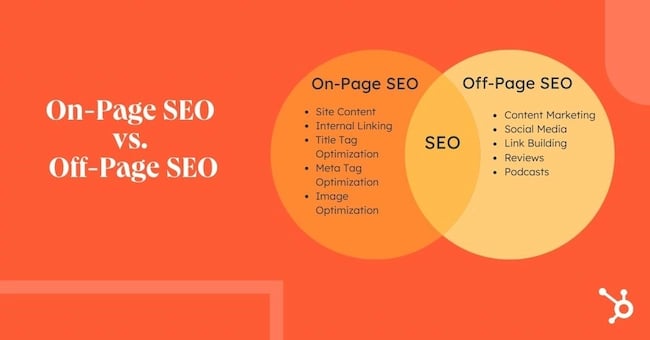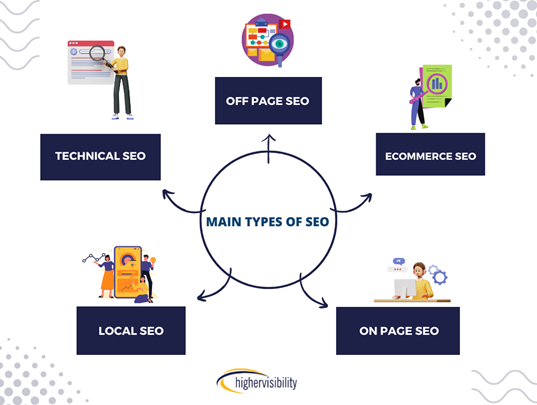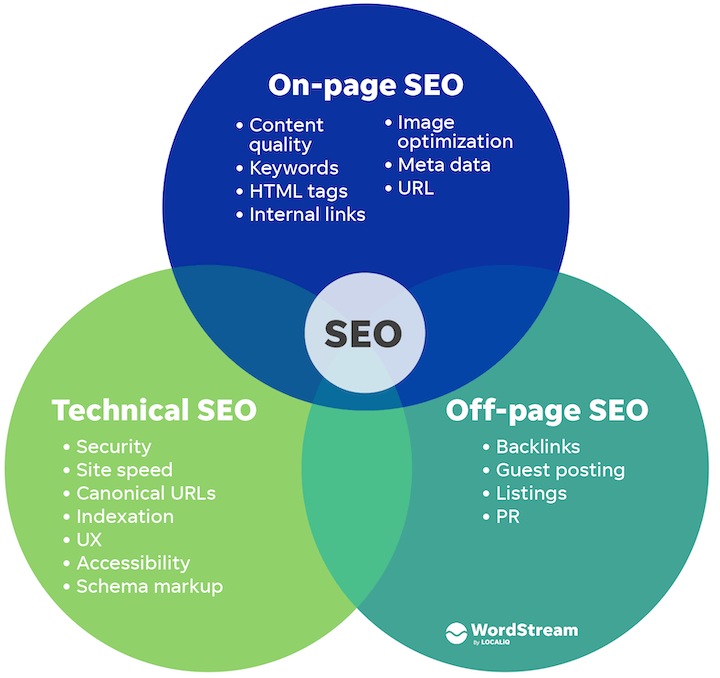Uncover hidden SEO opportunities and boost your online visibility with our comprehensive guide to conducting a powerful on-page audit.

Image courtesy of via DALL-E 3
Table of Contents
Introduction to On-Page SEO Audits
Have you ever wondered why some websites appear at the top of search results while others are buried deep down? Well, it all comes down to something called On-Page SEO. SEO stands for Search Engine Optimization, which is like the magic spell that helps websites attract more visitors. And when we talk about On-Page SEO, we’re focusing on the stuff you can do on your actual website to make it more appealing to search engines like Google, Bing, or Yahoo. Think of it as giving your website a shiny coat of paint to catch the search engines’ attention!
What is SEO?
So, what exactly is SEO? Imagine you have a lemonade stand, and you want more people to buy your delicious lemonade. SEO is like putting up colorful signs, making tasty lemonade, and being super friendly to everyone who walks by. It’s all about making your website more visible and inviting to people surfing the internet. When you do SEO right, your website will pop up when someone searches for something related to what you offer.
Understanding On-Page SEO
When we talk about On-Page SEO, we’re diving into the nitty-gritty details of your website. This includes things like picking the right keywords that people might use to find you, writing awesome content that people want to read, and making sure your website is easy to navigate. It’s like making sure your lemonade stand has the best lemonade in town, the friendliest service, and a sign that says, “Come on in!”
Why Do an SEO Audit?
Now, you might be wondering, “Why should I bother with something called an SEO audit?” Well, think of it as giving your website a check-up to see how healthy it is. Just like you visit the doctor to make sure you’re in tip-top shape, an SEO audit helps you find out what’s working well on your website and what needs a little TLC. By doing regular audits, you can fix any issues, boost your website’s visibility, and attract more visitors – kind of like adding a secret ingredient to your lemonade that makes everyone crave another glass!
Setting Up for an SEO Audit
Before diving into an SEO audit, it’s essential to gather the right tools to help you analyze your website’s performance. Tools like Google Analytics, Google Search Console, and specialized SEO audit software can provide valuable insights into your site’s SEO health.
Review Your Goals
Prior to starting your audit, take some time to review and understand your goals. Define what you want to achieve through the audit, whether it’s improving keyword rankings, enhancing user experience, or increasing website traffic. Knowing your goals will guide your audit process and help you focus on areas that need attention.
Baseline Metrics
One crucial step in preparing for an SEO audit is establishing baseline metrics. By documenting your current website performance metrics such as organic traffic, keyword rankings, and conversion rates, you’ll be able to track improvements post-audit. These baseline metrics serve as a point of reference to measure the effectiveness of your audit strategies.
Analyzing URL Structure
A good URL is like a signpost that shows you where you are on the internet. It should be simple, easy to understand, and include words that tell you what the page is about. For example, a good URL for a page about funny cat videos could be www.example.com/funny-cat-videos. This way, people and search engines instantly know what to expect when they click on the link.
Image courtesy of blog.hubspot.com via Google Images
Checking Your URLs
It’s essential to regularly check your website’s URLs to make sure they are SEO-friendly. This means looking for any URLs that are too long, have weird symbols or numbers, or don’t accurately reflect the content of the page. By keeping your URLs clean and descriptive, you make it easier for search engines to understand what your website is about and improve your chances of ranking higher in search results.
Evaluating Content Quality
In the world of websites and online content, quality plays a crucial role in attracting visitors and improving search engine rankings. Evaluating content quality involves looking at various aspects to ensure that your website’s content is not only engaging but also relevant to your audience.
Importance of Quality Content
Quality content is like a magnet for both readers and search engines. When your content is informative, well-written, and valuable to your audience, it not only keeps visitors on your site longer but also encourages them to return. Search engines recognize this quality and are more likely to rank your pages higher in search results. Therefore, investing time and effort into creating high-quality content is essential for the success of your website.
Optimizing Content with Keywords
Keywords are the backbone of search engine optimization. When used strategically in your content, keywords help search engines understand what your pages are about and match them with relevant search queries. However, it’s important to use keywords naturally and avoid overstuffing them, which can harm your rankings. By conducting keyword research and incorporating them seamlessly into your content, you can improve your website’s visibility and attract the right audience.
Enhancing Readability and Engagement
Not only should your content be optimized for search engines, but it should also be easy to read and engaging for your audience. To enhance readability, use simple language, break up long paragraphs, and incorporate headings and subheadings. Engaging content can include visuals, videos, and interactive elements to keep visitors interested and encourage them to explore more of your site. By focusing on both readability and engagement, you can create a positive user experience that benefits your website’s overall performance.
Meta Tags and Descriptions
Meta tags are snippets of text that describe a webpage’s content. These tags don’t appear on the page itself, but they provide important information to search engines about what the page is about. Meta tags include elements like the title tag, meta description, and meta keywords.

Image courtesy of blog.hubspot.com via Google Images
Crafting Effective Meta Descriptions
Meta descriptions are brief summaries of a webpage’s content that show up in search engine results. Writing a compelling meta description can improve click-through rates by enticing users to click on your link. To create an effective meta description, keep it concise, relevant, and include a call-to-action to encourage users to visit your website.
Image Optimization
Images on a website play a crucial role in attracting visitors and keeping them engaged. However, these images can also impact your site’s performance and search engine visibility. This is where image optimization comes into play.
Why Optimize Images?
Optimizing images is essential for two main reasons: reducing page load time and improving user experience. When images are not optimized, they can slow down your website’s loading speed, leading to higher bounce rates as impatient visitors navigate away. Additionally, search engines like Google consider page load speed as a ranking factor, so faster loading pages can result in better search visibility.
Using Alt Text
Alt text, or alternative text, is a concise description of an image that is displayed when the image file cannot be loaded or when a visually impaired user is using screen-reading software. Including descriptive alt text not only helps in making your website more accessible but also provides search engines with valuable information about the content of your images. When writing alt text, be sure to include relevant keywords related to the image while maintaining accuracy and clarity.
Compressing Images
Compressing images is another crucial step in image optimization. By reducing the file size of an image without compromising its quality, you can significantly improve your website’s loading speed. There are several tools and techniques available to compress images effectively. These tools use algorithms to remove unnecessary data from the image file while retaining its visual integrity. It’s important to strike a balance between file size reduction and image quality to ensure optimal performance.
Internal Linking
Internal linking is an essential aspect of On-Page SEO that plays a crucial role in improving your website’s performance and user experience. By strategically linking one page of your site to another, you can enhance the site’s structure, aid in user navigation, and boost your SEO efforts.

Image courtesy of www.highervisibility.com via Google Images
Benefits of Internal Linking
Internal links help search engines understand the hierarchy and relationship between different pages on your website. When you link relevant pages together, it not only improves the overall structure of your site but also helps search engines index your content more effectively. This, in turn, can lead to improved visibility in search results, ultimately driving more organic traffic to your site.
Additionally, internal linking allows users to navigate your website more easily, guiding them to relevant information and keeping them engaged. When users spend more time on your site and explore different pages through internal links, it signals to search engines that your content is valuable and relevant, further boosting your SEO efforts.
Best Practices for Internal Links
When implementing internal linking on your website, it’s essential to follow some best practices to maximize its benefits. Firstly, use descriptive anchor texts that clearly indicate to users and search engines what the linked page is about. Avoid using generic phrases like “click here” and instead opt for keyword-rich anchor texts that provide context.
Another best practice is to prioritize linking from high-authority pages to lower-ranking pages to distribute link equity effectively throughout your site. By strategically linking from popular pages to newer or less visible pages, you can help boost the visibility and ranking of the latter.
Furthermore, ensure that your internal links are relevant and add value to the user’s experience. Avoid overlinking or creating excessive links on a single page, as this can confuse both users and search engines. Instead, focus on creating a natural flow of links that guide users through your site logically.
Mobile Friendliness
Having a mobile-friendly website is crucial in today’s digital landscape. With more and more people using smartphones and tablets to browse the internet, it’s essential to ensure that your site is optimized for mobile devices.
Why Mobile Friendliness Matters
The number of users accessing the internet via mobile devices is skyrocketing. If your website isn’t mobile-friendly, you could be missing out on a significant chunk of potential visitors. Google also prioritizes mobile-responsive sites in its search rankings, so having a mobile-friendly design can directly impact your SEO performance.
Testing Your Mobile Friendliness
There are tools and methods available to check if your website is mobile-friendly. Google’s Mobile-Friendly Test is a great tool that analyzes your site and provides suggestions for improvement. Additionally, you can use your own mobile device to navigate your site and see if the user experience is seamless.
Conclusion and Final Steps
In this blog post, we have delved into the world of On-Page SEO audits and why they are crucial for improving website traffic. We started by understanding the basics of SEO and what On-Page SEO entails. We then explored the significance of conducting regular SEO audits to enhance website visibility and address any issues that may impact performance.

Image courtesy of www.wordstream.com via Google Images
Preparation is key before embarking on an SEO audit. By gathering the necessary tools, reviewing your goals, and establishing baseline metrics, you set yourself up for a successful audit. Analyzing your URL structure, evaluating content quality, optimizing meta tags, images, internal links, and ensuring mobile friendliness are all essential components of a thorough audit.
Ongoing SEO Practices
SEO is not a one-time task but an ongoing process. To maintain and improve your website’s performance, consider the following continuous improvement practices:
1. Regularly update your website with fresh and relevant content to keep visitors engaged and attract search engines.
2. Monitor your website’s performance metrics using tools like Google Analytics to track progress and identify areas for improvement.
3. Stay informed about the latest SEO trends and algorithm updates to adapt your strategies accordingly.
4. Engage with your audience through social media and other platforms to build relationships and drive traffic to your site.
By consistently implementing these practices, you can ensure that your website remains optimized for search engines and continues to attract visitors over time.
Want to turn these SEO insights into real results? Seorocket is an all-in-one AI SEO solution that uses the power of AI to analyze your competition and craft high-ranking content.
Seorocket offers a suite of powerful tools, including a Keyword Researcher to find the most profitable keywords, an AI Writer to generate unique and Google-friendly content, and an Automatic Publisher to schedule and publish your content directly to your website. Plus, you’ll get real-time performance tracking so you can see exactly what’s working and make adjustments as needed.
Stop just reading about SEO – take action with Seorocket and skyrocket your search rankings today. Sign up for a free trial and see the difference Seorocket can make for your website!
Frequently Asked Questions (FAQs)
Here are some common questions you might have about conducting an on-page SEO audit:
How often should I do an SEO audit?
It is recommended to conduct an SEO audit at least once every quarter to ensure your website is performing optimally and to identify any issues that need to be addressed. Regular audits can help you stay on top of changes in search engine algorithms and make necessary adjustments to improve your website’s visibility.
Are free SEO tools reliable?
While free SEO tools can be useful for conducting basic audits and getting insights into your website’s performance, they may not always provide the same level of accuracy and advanced features as paid tools. It’s important to use a combination of free and paid tools to get a comprehensive view of your website’s SEO health.
What is the difference between on-page and off-page SEO?
On-page SEO focuses on optimizing elements within your website, such as content, meta tags, and URLs, to improve your search engine rankings. Off-page SEO, on the other hand, involves activities like link building and social media marketing to boost your website’s reputation and authority in the eyes of search engines.







